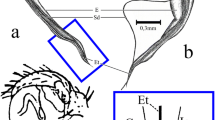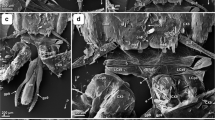Many scientific discoveries are almost by accident, and inspired guesses, imagination and luck all play a crucial role in scientific research.
Patrick McNeill & Steve Chapman, Research Methods, third edition 2005, p. 179
Abstract
In the history of zoology the English anatomist Morrison Watson (1845–1885) is considered to be the discoverer of the masculinized sexual organs of the spotted hyena. Beginning in 1877, Watson had published a series of anatomical studies on the spotted hyena (Watson, 1877, 1878, 1881, Watson and Young, 1879), in which he, in which he for the first time made public the anatomical peculiarities of the female spotted hyena’s genitalia. This scientific achievement is well documented. But now we can also state that a hundred years before Watson the Dutch amateur zoologist Robert Jacob Gordon (1743–1795), while serving in the Scots Brigades at the Cape of Good Hope, had already made the same discovery and merely unfortunate personal circumstances prevented publication. During his stay at the Cape, Gordon had studied spotted hyenas intensively and recorded his observations in accurate drawings and comments. These drawings have been preserved as part of a large collection of animal drawings entitled Gordon Atlas. With his discovery, Gordon actually was the first to provide empirical evidence of a “curious and inexplicable case of dimorphism” (Darwin on a beetle) in mammalians, long before Étienne Geoffrey Saint-Hilaire (Cours de l’histoire naturelle des mammifères, 1829) started examining masculinized sexual organs in the mole or Darwin recognized the importance of sexual dimorphism (Descent of Man, 1871). In this paper we reproduce for the first time all hyena drawings from the Gordon Atlas, including Gordon’s handwritten notes in the margins in the original Dutch and in translation. Additionally, we briefly delineate the knowledge about the South African spotted hyena in Gordon’s time and indicate that we doubt Watson’s explanation for the age-old confusion about the hyena.
Similar content being viewed by others
References
Adams, J. N. 1990. The Latin Sexual Vocabulary. Baltimore: The Johns Hopkins University Press.
Austen, Ralph A. 2010. Trans-Saharan Africa in World History. New York: Oxford University Press.
Bauhin, Caspar. 1614. De hermaphroditorum monstrosorumque partuum natura (…). Oppenheim: Hieronymus Galleri.
Buffon, Georges Louis Marie Leclerc. 1761. L’hyæne, in Histoire naturelle générale et particulière, Vol. 19. Paris, pp. 268–279.
Cave, A. J. E. and Rookmaaker, L. C. 1977. “Robert Jacob Gordon’s Original Account of the African Black Rhinoceros.” Journal of Zoology 182: 137–156.
Chapman, Henry C. 1888. “Observations on the female generative apparatus of Hyaena crocuta.” Proceedings of the Academy of Natural Sciences of Philadelphia, 189–191.
Cullinan, Patrick. 1992. Robert Jacob Gordon 1743–1795: The Man and his Travels at the Cape. Cape Town: Struik Winchester.
Daubenton, Louis Jean Marie. 1761. Description de l’Hyæne, in Buffon, Histoire Naturelle, Générale et Particuliére, Vol. 9. Paris: De l’Imprimerie royale, pp. 280–298.
Davis, D. Dwight and Story, H. Elisabeth. 1949. “The Female External Genitalia of the Spotted Hyena.” Fieldiana – Zoology 31: 277–283.
de Jong, Cornelius. 1803. Reisen nach dem Vorgebirge der guten Hoffnung, nach Irland und Norwegen in den Jahren 1791 bis 1797. Erster Theil. Hamburg: Hoffmann.
Deane, Norman N. 1962. “The Spotted Hyaena Crocuta crocuta crocuta.” The Lammergeyer 2: 26–43.
Frank, L. G., Glickman, S. E. and Powch, Irene. 1990. “Sexual Dimorphism in the Spotted Hyaena (Crocuta crocuta).” Journal of Zoology 221: 308–313.
Funk, Holger. 2010. Hyaena. On the Naming and Localisation of an Enigmatic Animal. München: GRIN Verlag.
Gesner, Conrad. 1551. De Hyaena, in Historiae animalium lib. I: De quadrupedibus viviparis (…). Zurich: C. Froschoverum, pp. 624–631.
Glickman, Stephen E. 1995. “The Spotted Hyena from Aristotle to the Lion King: Reputation is Everything.” Social Research 62: 501–537.
Glickman, Stephen E, Cunha, Gerald R, et al. 2006. “Mammalian Sexual Differentiation: Lessons from the Spotted Hyena.” Trends in Endocrinology and Metabolism 17: 349–356.
Grimpe, Geog. 1916. “Hyänologische Studien.” Zoologischer Anzeiger 48: 49–61.
Hamilton, William J. III, Tilson, Ronald L. and Frank, Lawrence G. 1986. “Sexual Monomorphism in Spotted Hyenas, Crocuta crocuta.” Ethology 71: 63–73.
Jones, Frederic Wood. 1944. “Some Curiosities of Mammalian Reproduction.” BJOG: An International Journal of Obstetrics & Gynaecology 51: 416–437.
Kaup, Johann Jakob. 1828. “Ueber Hyaena, Uromastix, Basiliscus, Corythaeolus, Acontias.” Isis. Encyclopädische Zeitschrift 21: 1144–1150.
Kennedy, R. F. 1967. Catalogue of Pictures in the Africana Museum, Vol. 2. Johannesburg: Africana Museum.
Koepfli, Klaus-Peter, Jenks, Susan M., et al. 2006. “Molecular Systematics of the Hyaenidae: Relationships of a Relictual Lineage Resolved by a Molecular Supermatrix.” Molecular Phylogenetics and Evolution 38: 603–620.
Kruuk, Hans. 1972. The Spotted Hyena. A Study of Predation and Social Behavior. Chicago: University of Chicago Press.
Lambros, Spyridon P. (ed.). 1885. Excerptorum Constantini de natura animalium libri duo. Aristophani historiae animalium epitome subiunctis Aeliani, Timothei aliorumque eclogis. Supplementum Aristotelicum I. Berlin: Georg Reimer.
Lange, Dierk. 2010. “Afrika südlich der Sahara – Von den Sakralstaaten zu den Großreichen.” In J. Fried & E.-D. Hehl (eds.), Weltdeutungen und Weltreligionen 600-1500. WBG Weltgeschichte Bd. III. Darmstadt, pp. 103–116.
Laqueur, Thomas. 1990. Making Sex. Body and Gender from the Greeks to Freud. Cambridge: Harvard University Press.
Le Vaillant, François. 1796. New Travels Into the Interior Parts of Africa, by the Way of the Cape of Good Hope, in the Years 1783, 84 and 85, Vols. I–III. London: G.G. & J. Robinson.
Lones, Thomas East. 1912. Aristotle’s Researches in Natural Science. London: West, Newman & Co.
Long, Kathleen P. 2006. Hermaphrodites in Renaissance Europe. Aldershot: Ashgate Publishing Company.
Matthews, L. H. 1939. “Reproduction in the Spotted Hyaena, Crocuta crocuta (Erxleben).” Philosophical Transactions of the Royal Society of London. Series B 230: 1–78.
Mills, Gus and Hofer, Heribert. 1998. Hyaenas. Status Survey and Conservation Action Plan. Gland, Switzerland and Cambridge, UK: IUCN.
Neuville, Henri. 1935. “De l’organe femelle de l’Hyène tachetée (Hyaena crocuta Erxl.).” Archives du Muséum National d’Histoire Naturelle (Paris) 6 sér., tome 12: 226–229.
Neuville, Henri. 1936. “Remarques complémentaires sur l’organe femelle de l’Hyaena crocuta.” Bulletin du Muséum National d’Histoire Naturelle (Paris) 8: 54–60.
Niemann, Tobias. 2010. Kamasutra kopfüber: Die 77 originellsten Formen der Fortpflanzung. München: C. H. Beck Verlag.
Raper, Peter E. and Boucher, Maurice (eds.). 1988. Robert Jacob Gordon, Cape Travels, 1777 to 1786, 2 Vols. Johannesburg: Brenthurst Press (both volumes continuously paginated).
Rookmaaker, Leendert Cornelis. 1983. “The Observations of Robert Jacob Gordon (1743–1795) on Giraffes (Giraffa camelopardalis) Found in Namaqualand.” South-West Africa Scientific Society 36/37: 71–90.
Rookmaaker, Leendert Cornelis. 1989. The Zoological Exploration of Southern Africa, 1650-1790. Rotterdam, Brookfield: A. A. Balkema.
Schmotzer, B. and Zimmermann, A. 1922. “Ueber die weiblichen Begattungsorgane der gefleckten Hyäne.” Anatomischer Anzeiger 55: 257–264.
Schnell, Rüdiger. 2002. Sexualität und Emotionalität in der vormodernen Ehe. Köln/Weimar/Wien: Böhlau Verlag.
Smith, Andrew B. 1990. “Gordon on Sparrman.” Quarterly Bulletin of the South African Library 45: 72–77.
Sparrman, Anders. 1786. A Voyage to the Cape of Good Hope Towards the Antarctic Polar Circle Round the World and to the Country of the Hottentots and the Caffres from the Year 1772–1776, Vols. I–II. London: G.G.J. and J. Robinson.
Stolberg, Michael. 2003. “A Woman Down to her Bones. The Anatomy of Sexual Difference in the Sixteenth and Early Seventeenth Centuries.” Isis 94: 274–299.
Swanson, John T. 1975. “The Myth of Trans-Saharan Trade During the Roman Era.” The International Journal of African Historical Studies 8: 582–600.
Thunberg, Carl Peter. 1796. Travels in Europe, Africa, and Asia. Performed Between the Years 1770 and 1779, 4 vols. 3rd ed. London: W. Richardson, J. Egerton.
Thunberg, Carl Peter. 1811. “Mammalia Capensia, recensita et illustrata.” Mémoires de l‘Académie Impériale des Sciences de St. Petersbourg Tome III: 299–323. English translation in Funk, 2010, p. 114.
Thunberg, Carl Peter. 1820. “Beskrifning och Teckning på ett nytt species, Hyaena brunnea”. Kungliga Svenska Vetenskapsakademiens Handlingar 1: 59–65. English translation in Funk, 2010, pp. 110–113.
van Jaarsveld, A. S. and Skinner, J. D. 1987. “Spotted Hyaena Monomorphism: An Adaptive ‘Phallusy’?” South African Journal of Science 83: 612–615.
van Lawick-Goodall, Jane and van Lawick, Hugo. 1971. Innocent Killers. Boston: Houghton Mifflin.
Wagner, Aaron P., Frank, Laurence G., Creel, Scott and Coscia, Elizabeth M. 2007. “Transient Genital Abnormalities in Striped Hyenas (Hyaena hyaena).” Hormones and Behavior 51: 626–632.
Watson, Morrison. 1877. “On the Female Generative Organs of Hyaena Crocuta.” Proceedings of the Zoological Society of London 24: 369–379.
Watson, Morrison. 1878. “On the Male Generative Organs of Hyaena Crocuta.” Proceedings of the Zoological Society of London: 416–428.
Watson, Morrison. 1881. “Additional Observations on the Anatomy of the Spotted Hyaena.” Proceedings of the Zoological Society of London: 79–107.
Watson, Morrison and Young, Alfred H. 1879. “On the Anatomy of Hyaena Crocuta.” Proceedings of the Zoological Society of London 47: 79–107.
Wells, Milton E. 1968. “A Comparison of the Reproductive Tracts of Crocuta crocuta, Hyaena hyaena and Proteles cristatus.” East African Wildlife Journal 6: 63–70.
Young, Hugh H. 1937. Genital Abnormalities, Hermaphroditism & Related Adrenal Diseases. London: Baillière, Tindall & Cox.
Author information
Authors and Affiliations
Corresponding author
Rights and permissions
About this article
Cite this article
Funk, H. R. J. Gordon’s Discovery of the Spotted Hyena’s Extraordinary Genitalia in 1777. J Hist Biol 45, 301–328 (2012). https://doi.org/10.1007/s10739-011-9285-5
Published:
Issue Date:
DOI: https://doi.org/10.1007/s10739-011-9285-5




